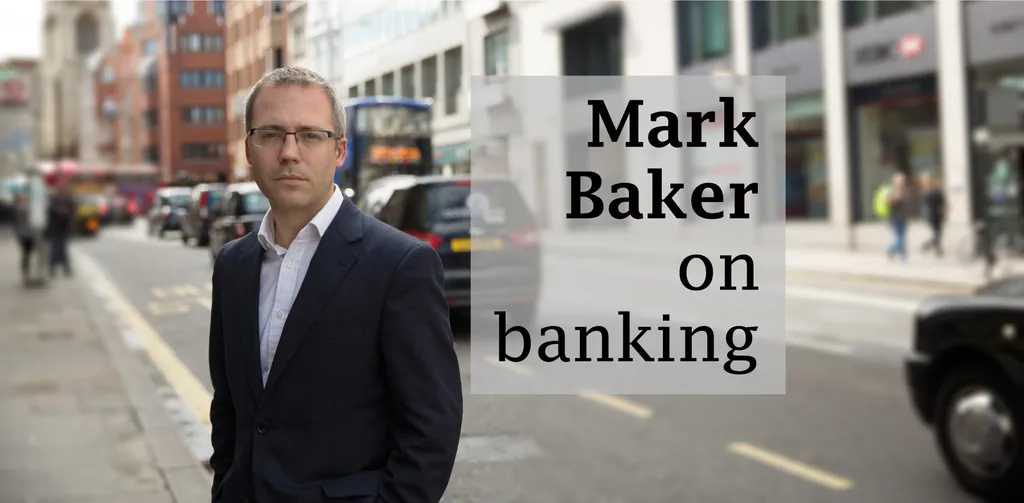Forget Fitch downgrading the US sovereign last week: today the credit rating talk is of just one thing: Moody’s taking a hatchet to a slew of the country’s regional banks, including the kinds of names that are typically thought of as the more resilient in the sector.
The agency cut the ratings on 10 smaller banks, including M&T Bank. But it warned that it might downgrade more firms, including bigger institutions such as Bank of New York Mellon, State Street, US Bancorp and Truist. And it also switched its outlook on 11 others from stable to negative, including at Fifth Third, Citizens, Capital One, Huntington, PNC and Regions.
Moody’s has a list of concerns backing its moves, beginning with a decline in the stability of US bank deposit funding. More complex is the impact of monetary tightening and an inverted Treasury curve, but the bottom line is that it is tougher to grow the bottom line. That in turn hurts banks’ ability to generate capital.
One obvious response to that might be to lend less, and some institutions are doing just that. But the problem with that approach is that it cuts down opportunities to generate earnings from the higher rates that now prevail.
At the same time, the value of debt securities portfolios – whether in the available-for-sale (AFS) or held-to-maturity (HTM) buckets that entered mainstream discussion back in March 2023 when Silicon Valley Bank collapsed – is being eroded ever more as rates rise and stay high. A heightened awareness of this issue among investors brings rewards to those seen as less vulnerable but also increased pressure on laggards. That pressure could drive banks to chase higher-cost deposits or higher-cost market funding rather than be forced to dump bonds, leading to further erosion of profits.
Taken as a whole, the pressures set out by Moody’s look stark – and indisputable
Moody’s assessment that “interest rate risk is not captured well in US bank regulation and thus can create liquidity risks” might puzzle those who would argue – as I would – that there is plenty of scope for these risks to be observed and tackled within existing US bank regulation. But it is undoubtedly the case that the crisis of March 2023 revealed that regulators were not sufficiently alive to them.
And then… there is regulation. Mid-sized banks have benefited from less stringent regulation than their bigger cousins for some time, but the cost of that in reduced resilience and increased vulnerability to sudden scares is now becoming painfully clear.
That is now set to change with the recent proposal from the Federal Reserve, Office of the Comptroller of the Currency (OCC) and the Federal Deposit Insurance Corporation (FDIC), the Federal Reserve’s vice-chair for bank supervision, to extend the toughest requirements down to balance sheets of just $100 billion (from the current level of $700 billion) – and to make those toughest requirements tougher. The current estimate is for a 16% increase in common equity tier-1 capital requirements across the sector.
US regulators want those new capital requirements – effectively the final US implementation of Basel III, often termed the ‘endgame’ or ‘Basel IV’ – to start to be applied in the middle of 2025, with a three-year transition period for full implementation.
Moody’s likes the idea of more capital, of course, seeing it as a long-term credit positive for banks, but notes that the costs of implementation would rise in the short term. The responses of some banks to those requirements might include asset sales and M&A, moves that might be intended or unintended consequences – it is hard to read the minds of regulators. But they could also hurt profitability at some firms.
To top it all, the Moody’s base case is for a US recession in late 2023 or early 2024. And that is just one of the factors behind another issue battering the US banking sector right now: the weakening of areas of commercial real estate (CRE), particularly offices and construction.
Challenges ahead
Taken as a whole, the pressures set out by Moody’s look stark – and indisputable. The judgement, of course, comes down to assessing the extent to which each firm can withstand them. And here the top-line picture – lots of banks on negative outlook, some big ones on review for downgrade – misses the considerable nuance that Moody’s detailed assessments carry.
Citizens – which we at Euromoney named the US’s best super-regional bank in our most recent Awards for Excellence – might seem a surprising inclusion in the list of banks whose outlook has been moved from stable to negative. After all, it is widely seen as a fairly conservative institution, which is one of the reasons that we liked it. But as such, it is an interesting case to look at as an example of how Moody’s concerns for the sector play out in practice.
The bank’s loan book is well diversified and its financial performance has been decent. Its CET1 ratio stands at 10.3%, better than many competitors. Its deposit funding is in better shape than some – deposits rose 3% in the second quarter, while its reliance on market funding fell. About two thirds of its deposits are consumer and 70% insured or secured.
Pre-provision profits at Citizens rose 14% year on year in the second quarter of 2023, which put it among the better performers among the mid-sized US banks. And over the past four quarters profits are up 38%. On a post-provision basis, profits rose 28% for the quarter and 23% for the four quarters, making it the best performer of the super-regionals apart from M&T Bank, which was coming off a very low comparable last year.
As Moody’s notes, most of Citizens’ securities holdings are in its AFS portfolio, and the bank uses cash flow hedges to manage rate risk. The agency describes Citizens’ unrealized AFS losses of 11% of tangible common equity as “relatively modest”.
So, what drives the Moody’s view here? The agency says that funding costs are starting to be felt in net interest margin, which fell 13 basis points in the second quarter. Provisioning is still growing, and as at most peers, much of that these days goes towards bolstering reserves against potential losses in CRE lending.
Citizens acquired more CRE loans when it bought Investors Bancorp in 2022, although much was multifamily lending, which performs better than most, and the bank’s concentration of CRE lending is not out of line.
Provisions built at most of the US super-regional banks in the last quarter. Taking 11 of them in aggregate (Capital One, Citizens, Comerica, Fifth Third, Huntington Bancshares, KeyCorp, M&T Bank, PNC, Regions, Truist, US Bancorp), provisions totalled $4.9 billion, marking the sixth consecutive quarter of net provisioning for that group.
Moody’s thinks the rising costs of deposits and CRE weakness will pressure profitability at Citizens, although that assessment is far from unique to that bank. But it also notes that the bank’s non-interest income will provide less of an offset than at some peers. At just 24% in the second quarter of 2023, Citizens’ non-interest income as a percentage of overall revenues is one of the lowest in the peer group, where many are in the mid to high 30s.
As the example of Citizens shows, Moody’s assessment is that much of the sector – even well-managed and sound firms – is facing challenges in what remains a highly uncertain environment. What is more notable than the detail of any particular assessment, though, is the mood music of the overall picture.
The longer-term outcome – with a bigger cohort of banks bolstered by the resilience of more stringent regulatory requirements – might well be a positive. But first they have to get through a recession. Moody’s moves reflect how that will hurt.
PS
In May, when HSBC and Scotia Capital were added to the long list of banks being fined by US regulators for historic failures to monitor communications properly on platforms such as WhatsApp, we asked “Are we done yet?”. The answer, it turns out on Tuesday, was “No”.




